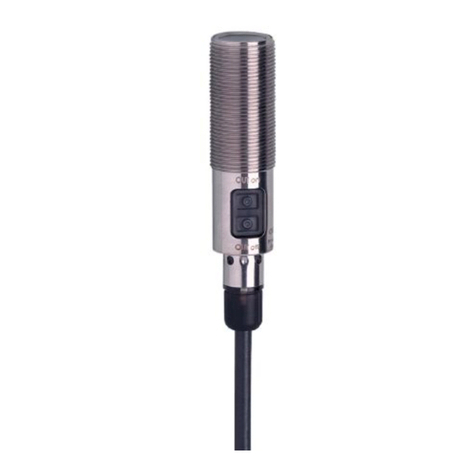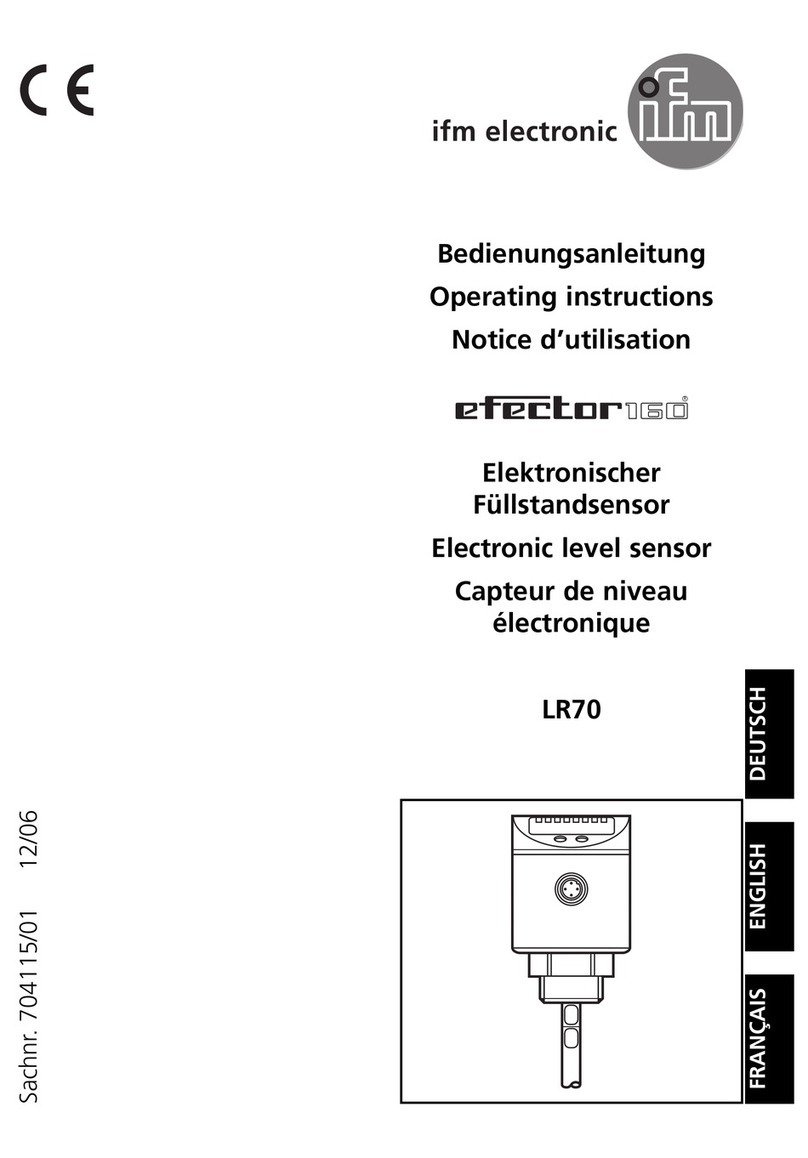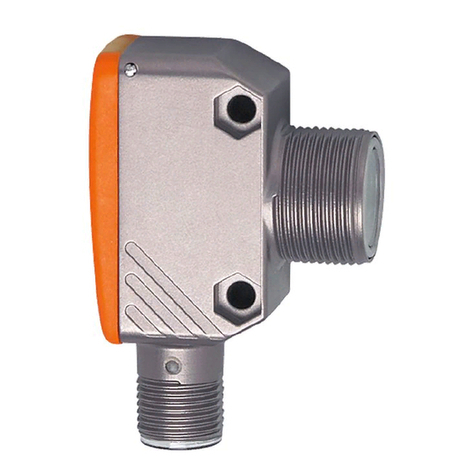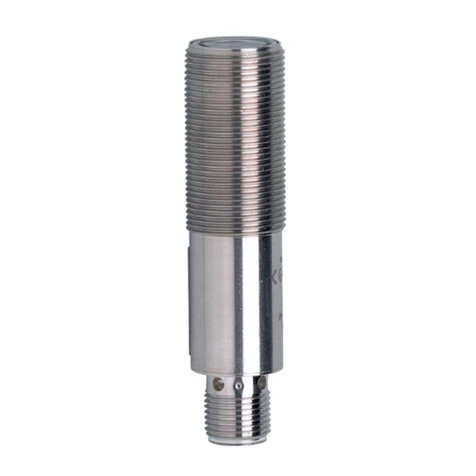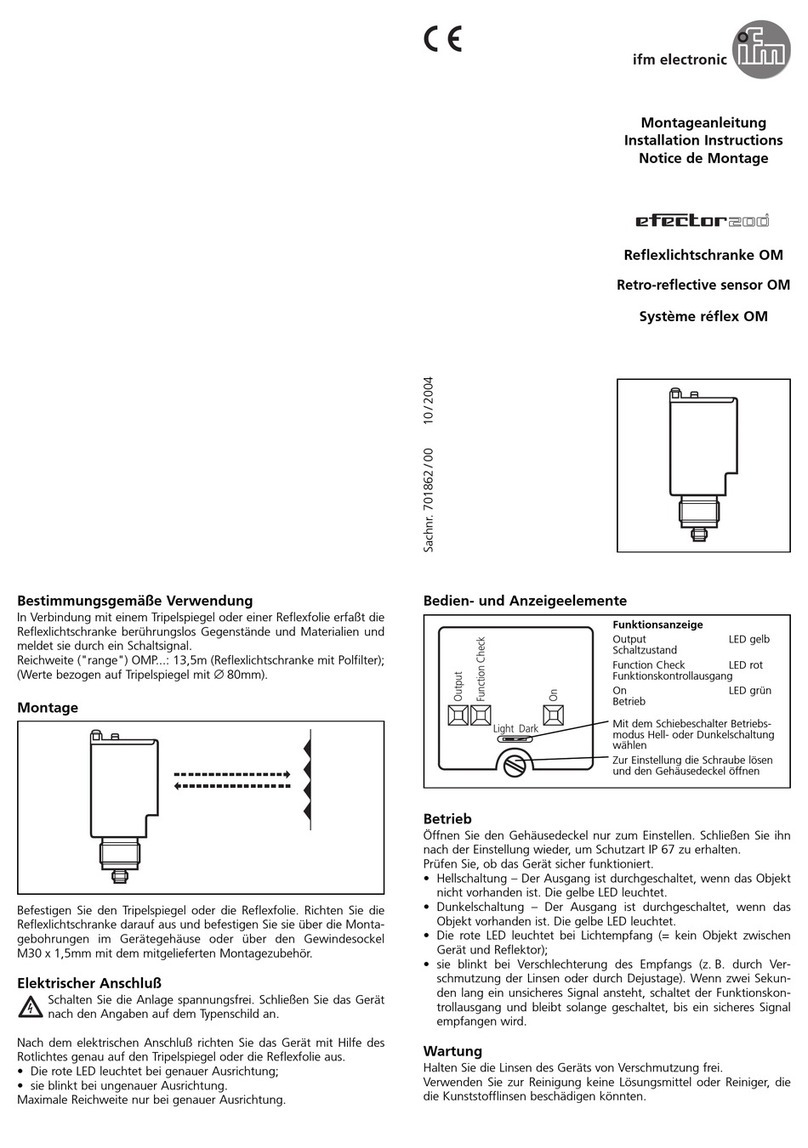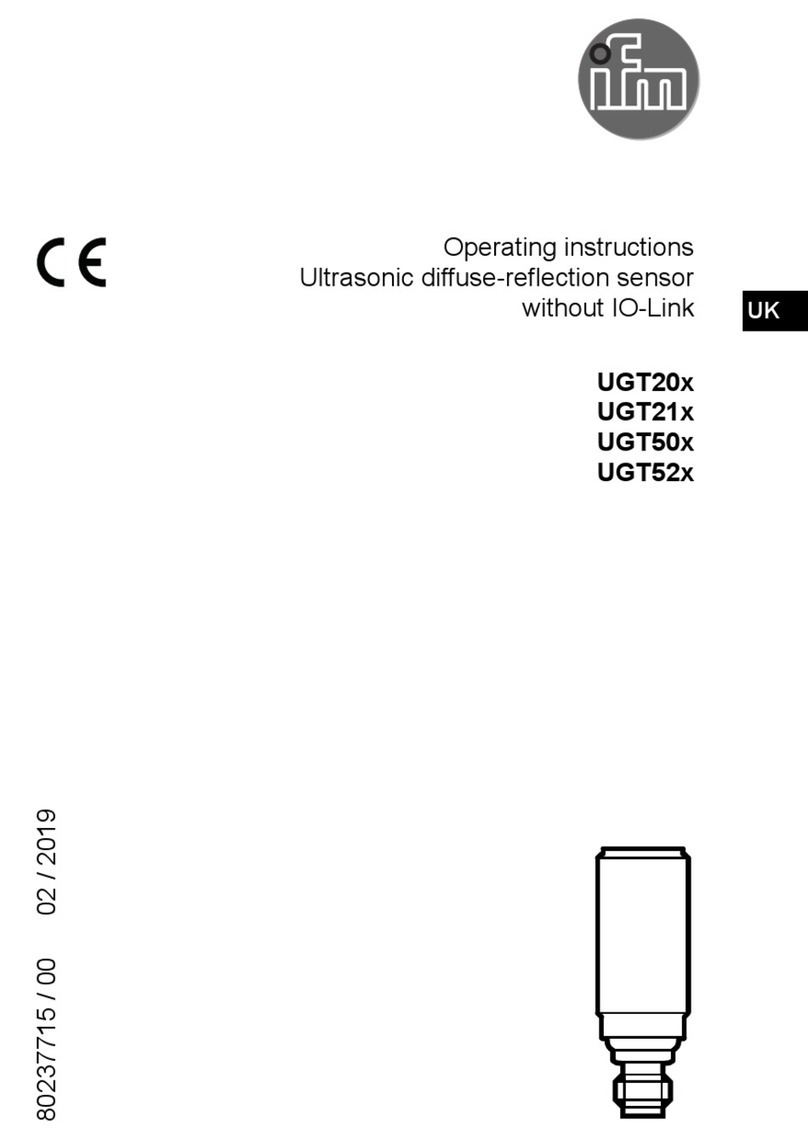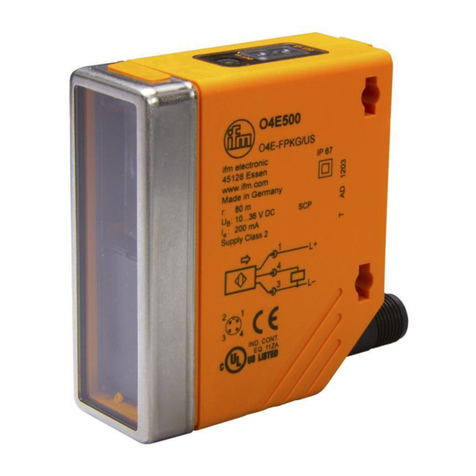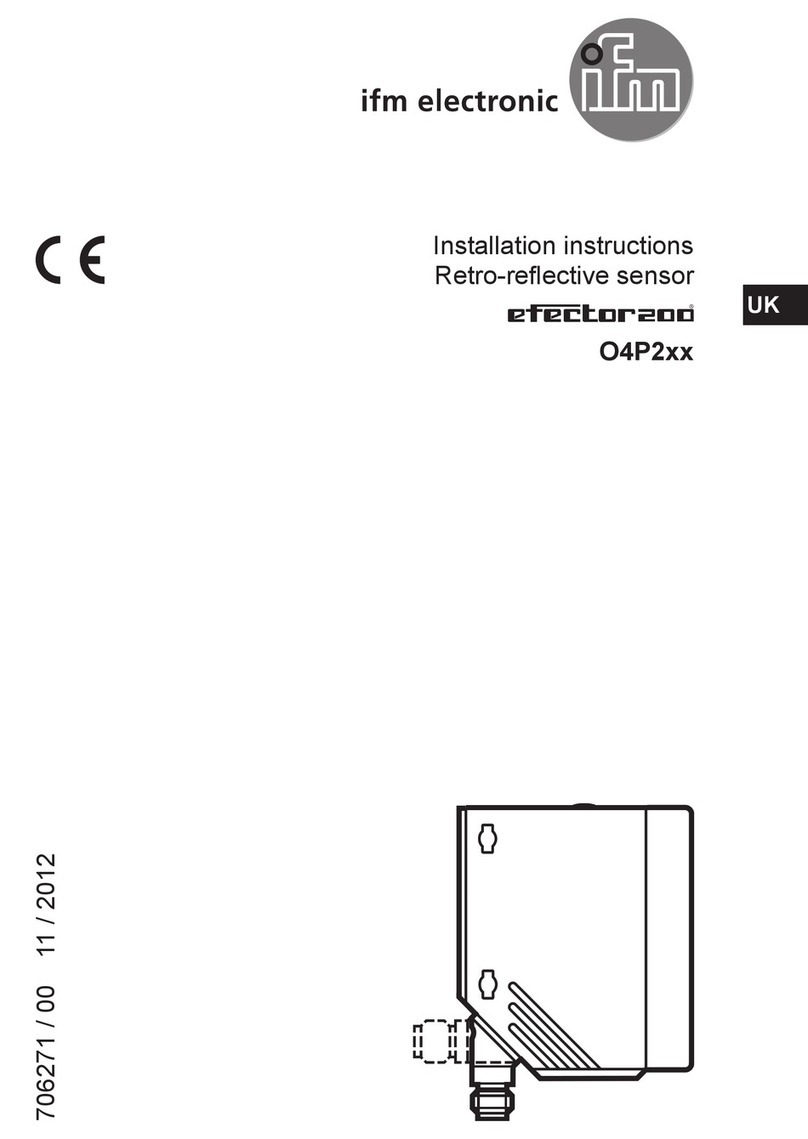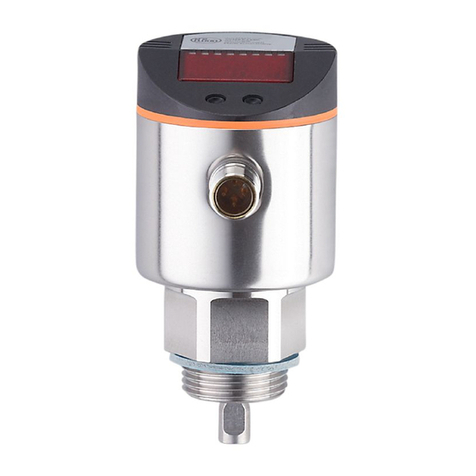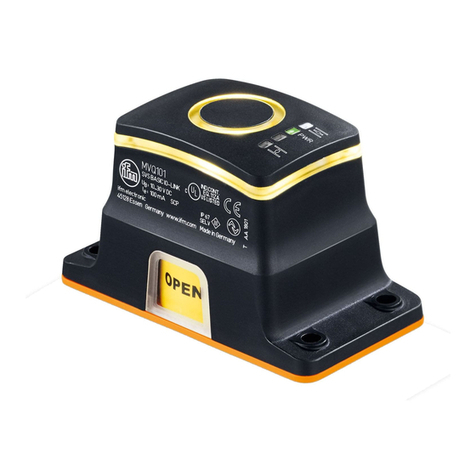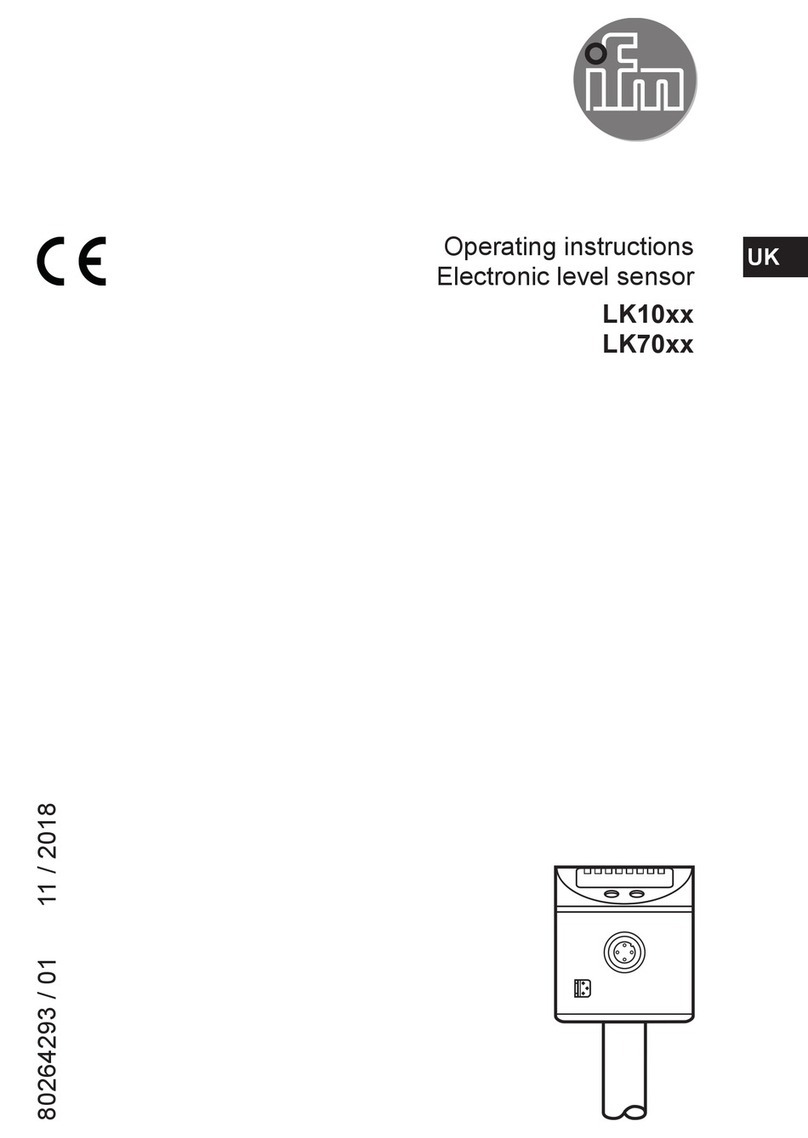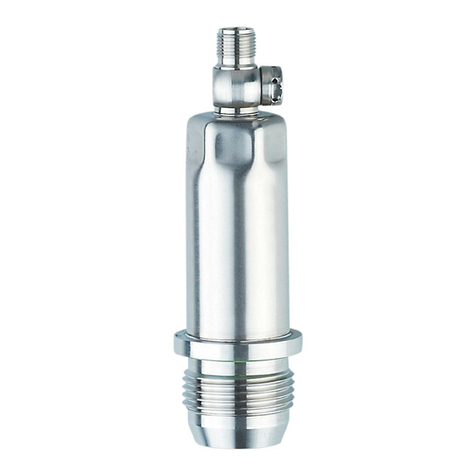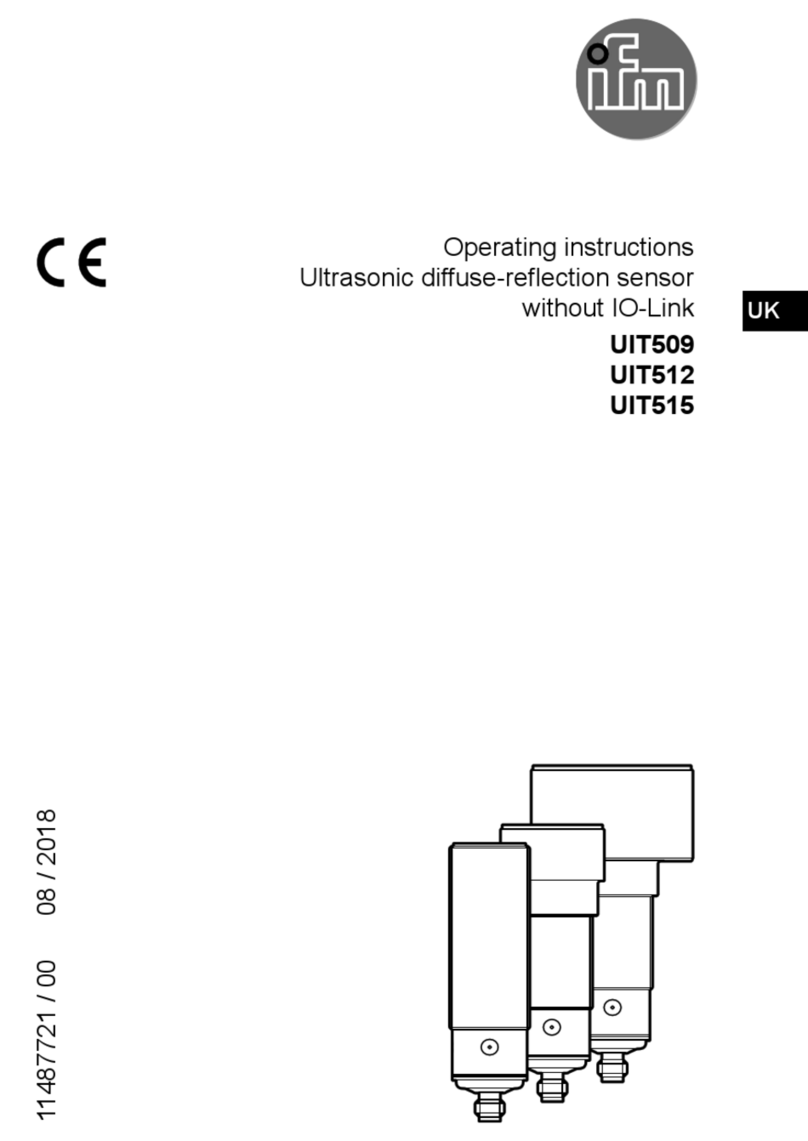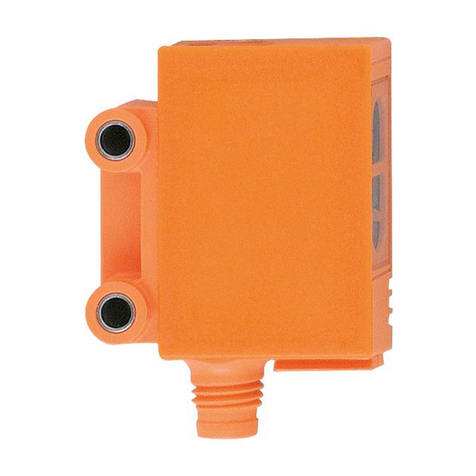
Inclination sensor JN
2
Content
1 Preliminary note . . . . . . . . . . . . . . . . . . . . . . . . . . . . . . . . . . . . . . . . . . . . . . . . . 4
1.1 Symbols used. . . . . . . . . . . . . . . . . . . . . . . . . . . . . . . . . . . . . . . . . . . . . . . 4
2 Safety instructions . . . . . . . . . . . . . . . . . . . . . . . . . . . . . . . . . . . . . . . . . . . . . . . 4
2.1 General information . . . . . . . . . . . . . . . . . . . . . . . . . . . . . . . . . . . . . . . . . . 4
2.2 Target group . . . . . . . . . . . . . . . . . . . . . . . . . . . . . . . . . . . . . . . . . . . . . . . . 4
2.3 Electrical connection . . . . . . . . . . . . . . . . . . . . . . . . . . . . . . . . . . . . . . . . . 4
2.4 Tampering with the device . . . . . . . . . . . . . . . . . . . . . . . . . . . . . . . . . . . . . 5
3 Functions and features . . . . . . . . . . . . . . . . . . . . . . . . . . . . . . . . . . . . . . . . . . . . 5
4 Installation . . . . . . . . . . . . . . . . . . . . . . . . . . . . . . . . . . . . . . . . . . . . . . . . . . . . . 5
4.1 Fixing . . . . . . . . . . . . . . . . . . . . . . . . . . . . . . . . . . . . . . . . . . . . . . . . . . . . . 5
4.2 Mounting surface . . . . . . . . . . . . . . . . . . . . . . . . . . . . . . . . . . . . . . . . . . . . 5
5 Scale drawing . . . . . . . . . . . . . . . . . . . . . . . . . . . . . . . . . . . . . . . . . . . . . . . . . . . 6
6 Electrical connection. . . . . . . . . . . . . . . . . . . . . . . . . . . . . . . . . . . . . . . . . . . . . . 6
7 IO-Link interface . . . . . . . . . . . . . . . . . . . . . . . . . . . . . . . . . . . . . . . . . . . . . . . . . 7
8 Basic system settings and diagnostics . . . . . . . . . . . . . . . . . . . . . . . . . . . . . . . 10
8.1 Heating (ISDU index 4102) . . . . . . . . . . . . . . . . . . . . . . . . . . . . . . . . . . . .11
8.2 Measuring method (ISDU index 4106) . . . . . . . . . . . . . . . . . . . . . . . . . . . .11
8.3 Measuring cell and ambient temperature, heating power (ISDU index
4110...4112). . . . . . . . . . . . . . . . . . . . . . . . . . . . . . . . . . . . . . . . . . . . . . . . . . . .11
8.4 MEMS self-test (system command 0xB2 and ISDU index 4114) . . . . . . . 12
9 Parameter setting of the inclination sensor. . . . . . . . . . . . . . . . . . . . . . . . . . . . 12
10 Angle calculation (ISDU index 4100) . . . . . . . . . . . . . . . . . . . . . . . . . . . . . . . 13
10.1 Perpendicular angle (ISDU index 4100 = 0). . . . . . . . . . . . . . . . . . . . . . 13
10.2 Euler angle (ISDU index 4100 = 1) . . . . . . . . . . . . . . . . . . . . . . . . . . . . 14
10.3 Gimbal angle X (ISDU index 4100 = 2) . . . . . . . . . . . . . . . . . . . . . . . . . 14
10.4 Gimbal angle Y (ISDU index 4100 = 3) . . . . . . . . . . . . . . . . . . . . . . . . . 15
10.5 Explanatory example . . . . . . . . . . . . . . . . . . . . . . . . . . . . . . . . . . . . . . . 15
10.6 Limit frequency digital filter (ISDU index 4101) . . . . . . . . . . . . . . . . . . . 16
10.7 Quadrant correction (ISDU index 4103) . . . . . . . . . . . . . . . . . . . . . . . . . 16
10.8 Set zero point (system commands 0xE2 and 0xE3 and ISDU index 4105)
. . . . . . . . . . . . . . . . . . . . . . . . . . . . . . . . . . . . . . . . . . . . . . . . . . . . . . . . . . . . 16
10.9 Set teach (system commands 0xE0 and 0xE1 and ISDU index 4104) . 16
11 Parameter setting of the vibration measurement . . . . . . . . . . . . . . . . . . . . . . 18
11.1 Configure measuring plane (ISDU index 4107) . . . . . . . . . . . . . . . . . . . 18
11.2 FIR filter with vibration measurement (ISDU index 4108) . . . . . . . . . . . 19
11.3 Measuring range of the vibration measurement (ISDU index 4109) . . . 19
12 Process data transfer via IO-Link . . . . . . . . . . . . . . . . . . . . . . . . . . . . . . . . . . 19
13 Parameter setting of the analogue outputs. . . . . . . . . . . . . . . . . . . . . . . . . . . 20
13.1 Analogue output as current source 4...20 mA . . . . . . . . . . . . . . . . . . . . 23
